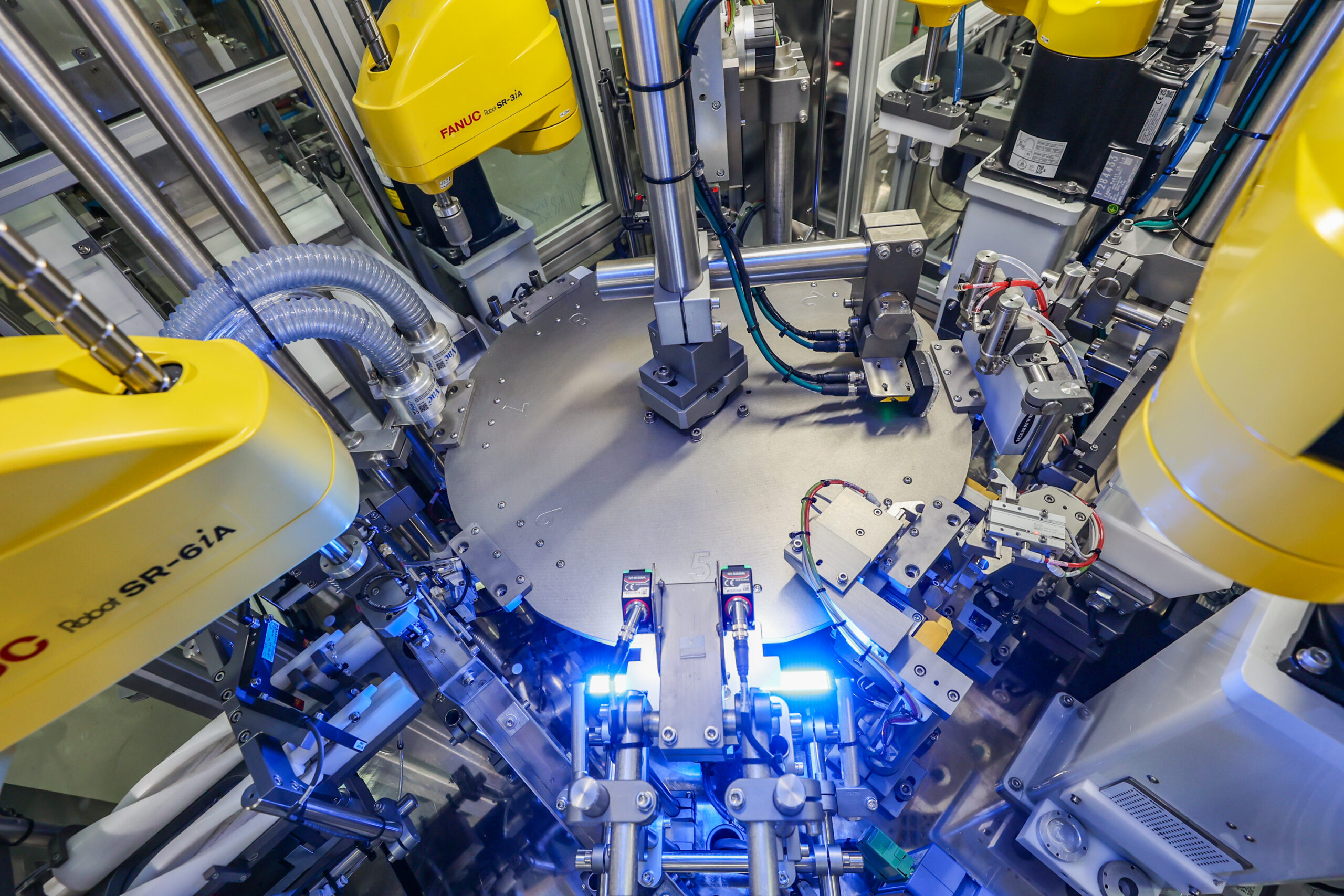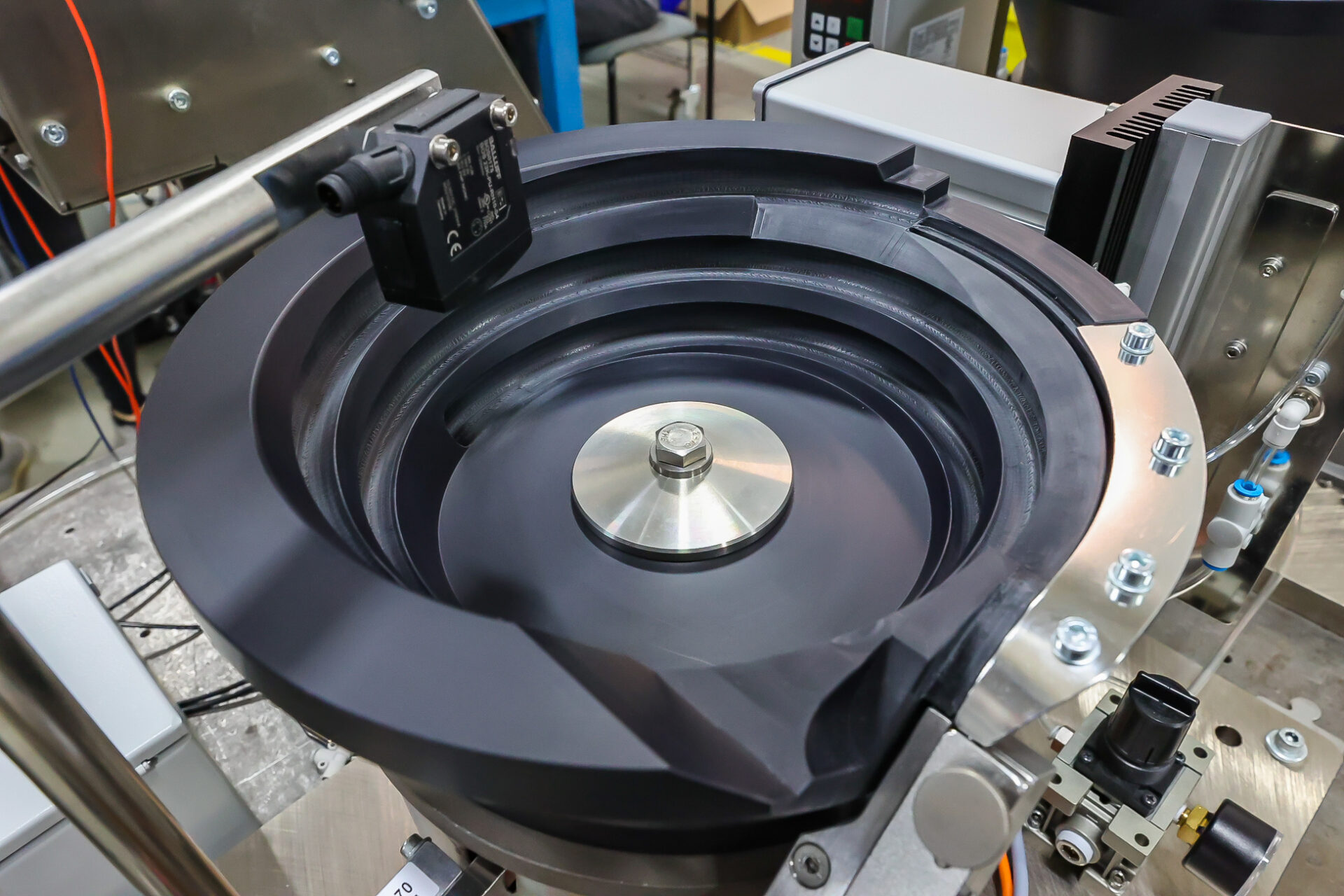As industries push the limits of automation to reduce errors and improve productivity, integrating linear feeders, with the option of vision systems, has become an increasingly common solution for achieving accurate part orientation and placement, while simplifying tooling complexities. By combining precise mechanical feeding with intelligent visual inspection and guidance, manufacturers can achieve levels of accuracy, efficiency, and quality control that were once difficult to attain.
This integration allows production lines to handle various parts with confidence, minimize assembly errors, and ensure every component is perfectly prepared for its next stage. For manufacturers operating in competitive sectors such as medical devices, automotive, and electronics, these combined systems offer a powerful advantage, improving throughput while maintaining the stringent quality standards demanded by customers and regulatory bodies.
But how exactly does this integration work, and why is it beneficial for your operation? In this article, we will explore:
- What linear feeders are
- How vision systems complement linear feeders
- The benefits of integrating these systems
- Typical applications across industries
- Key considerations for successful integration
What is a Linear Feeder?
A linear feeder, also known as an inline feeder, is a system designed to orient and transport parts in a single-file from a bulk feeding system such as elevator conveyors, vibratory hoppers or live bottom storage solutions, to the next stage of production. Linear feeders maintain part orientation while gently moving components along several stages of the system, ensuring consistent spacing and alignment. Once the bulk storage system has sorted the parts, the linear feeder takes over to deliver them smoothly and consistently in an organized row.
Think of it like this: a mass of parts is dumped into the bulk storage at random, and then the linear feeder sorts, orients and presents the parts in a uniform fashion, consistently. This is especially important when you need parts to travel a certain distance after sorting or when your automation process requires extra staging room to keep production running efficiently.
How Vision Systems Complement Linear Feeders
Vision systems use cameras, lighting, and software to inspect, identify, and sort parts within manufacturing environments. When combined with linear feeders, vision systems add an extra layer of precision, simplicity and intelligence to your production process by:
- Verifying part orientation
- Detecting defects or irregularities
- Simplifying hard tooling for reduced costs
- Multiple part recipes
Linear feeders are designed to move parts in a straight line while keeping them properly spaced and oriented. However, even with the best feeder design, there can be occasional part variations or mold inconsistencies that cause jamming or stoppages during production. This is where vision systems come in.
By integrating cameras within the linear feeder pre-orientation station, vision systems can inspect each part in real time as it moves along. They can verify that every part is oriented correctly, detect defects or irregularities, and provide data for companies that need data on part tracking. For highly sensitive assemblies, this reduces risks associated with the robot picking the part, avoiding errors that can lead to production stoppages or damaged components.
For example, if a part has inconsistent flashing, the vision system can detect this instantly and reject it for recirculation. Depending on how your system is set up, it can either recirculate the part into bulk storage, or reject it to an external collection bin. This integration of vision systems with linear feeders results in simplified tooling, less jam points, and greater flexibility, especially for handling parts with high inconsistencies. Ultimately, it improves the reliability and efficiency of your entire automation process.
Benefits of Integrating Linear Feeders with Vision Systems
1: Enhanced Part Qualification
Even the best-designed feeder systems can occasionally deliver parts with mold inconsistencies that can be detrimental to the device or component assembly. A vision system acts as a simplified qualification system, ensuring only parts within specification are presented. This is especially critical in industries with precision assemblies such as surgical devices.
2: Increased Production Efficiency
By reducing the chances of system jams or assembly errors, the integration of a vision system minimizes downtime, rework, and human intervention, resulting in higher throughput. Operators spend less time troubleshooting stoppages, and production lines run smoothly with fewer interruptions.
3: Flexibility for Part Changes
Some parts may undergo changes during production and with simplified tooling, integrated vision systems can be quickly programmed to adjust the acceptance of the new parts. This provides reliable feeding for production lines that may phase out critical details that would require new tooling sections in traditional feeding.
4: Improved Quality Control
Vision systems not only simplify the tooling of a linear feeder, but ensure parts are not presented at the end of the storage track for further processing. This adds a critical quality control checkpoint directly within your feeding system, reducing defective part assembly and warranty costs.
5: Multiple Parts in One System
While linear feeders can be configured to handle multiple part variations, operator error during cleaning often leads to incomplete removal of previous variants. Integrating a vision system into a linear feeder prevents the incorrect batch or part number from entering the system, preventing crashes in the pick up tooling or assembly process.
Typical Applications for Linear Feeders with Vision Systems
Medical Device Manufacturing
Medical devices often include small, high-precision components that require absolute part accuracy. For example, catheter tips or surgical fasteners must have perfect tolerances before insertion of the device or kit. Integrating linear feeders with vision ensures out of specification parts, or parts with debris, are not introduced to the robot, pick and place or bagging system, ensuring a high quality product, consistently and reliably.
Automotive Component Assembly
Automotive assembly lines handle thousands of various fasteners, clips, and electrical connectors daily, oftentimes in one common system. Vision systems integrated with linear feeders verify the correct variant is being run in the system, in cases where manual line clearance by operators is not perfect.
Electronics Manufacturing
In electronics, even minor defects can cause assembly failures or performance issues. Vision-guided linear feeder systems help ensure parts are not delivered into the secondary process such as soldering of circuit boards or right assembly.
Key Considerations for Successful Integration
1. Feeder Design Compatibility
Ensure the linear feeder design supports stable part presentation for vision inspection. Feeder rails must minimize vibration and maintain consistent part spacing, allowing clear image capture without motion blur.
2: Lighting and Camera Placement
Proper lighting is critical for reliable vision inspection, especially the consideration of ambient light fluctuations. Diffused lighting reduces shadows and glare, while camera placement should maximize the field of view and resolution. Often, machine vision integrators will test multiple lighting angles and camera heights to achieve optimal results.
3. Data Communication
Oftentimes data tracking is critical to review OEE to narrow down production issues. Ensuring the vision system can communicate with the appropriate data base is critical for data tracking and retention.
4. Part Surface and Finish
Highly reflective or translucent parts can pose challenges for vision systems. Specialized lighting, specific tooling material on feeding systems, polarizing filters, or image processing techniques may be needed to ensure accurate detection. Consulting your feeder and vision system integrators early in the design process can help avoid costly adjustments later.
5. Cycle Time Requirements
Vision inspection adds a short processing step between feeding and picking. Ensuring that the system’s inspection and data transmission speeds align with your production cycle time requirements is critical for maintaining overall throughput.
VTR Feeder Solutions: Your Partner for Integrated Linear Feeding Solutions
Integrating linear feeders with vision systems is a powerful way to maximize part orientation accuracy, improve quality control, and boost overall production efficiency. As automation technology advances, these integrated solutions are becoming the standard for manufacturers aiming for zero-defect production and competitive throughput.
If you are exploring ways to integrate vision inspection into your parts feeding system, our team is here to help. Our team has extensive experience designing custom linear feeder solutions integrated with vision inspection systems, ensuring your parts are precisely oriented and defect-free before reaching the next stage of your process.
Contact VTR Feeder Solutions today to discuss your application and discover how we can support your automation goals.




